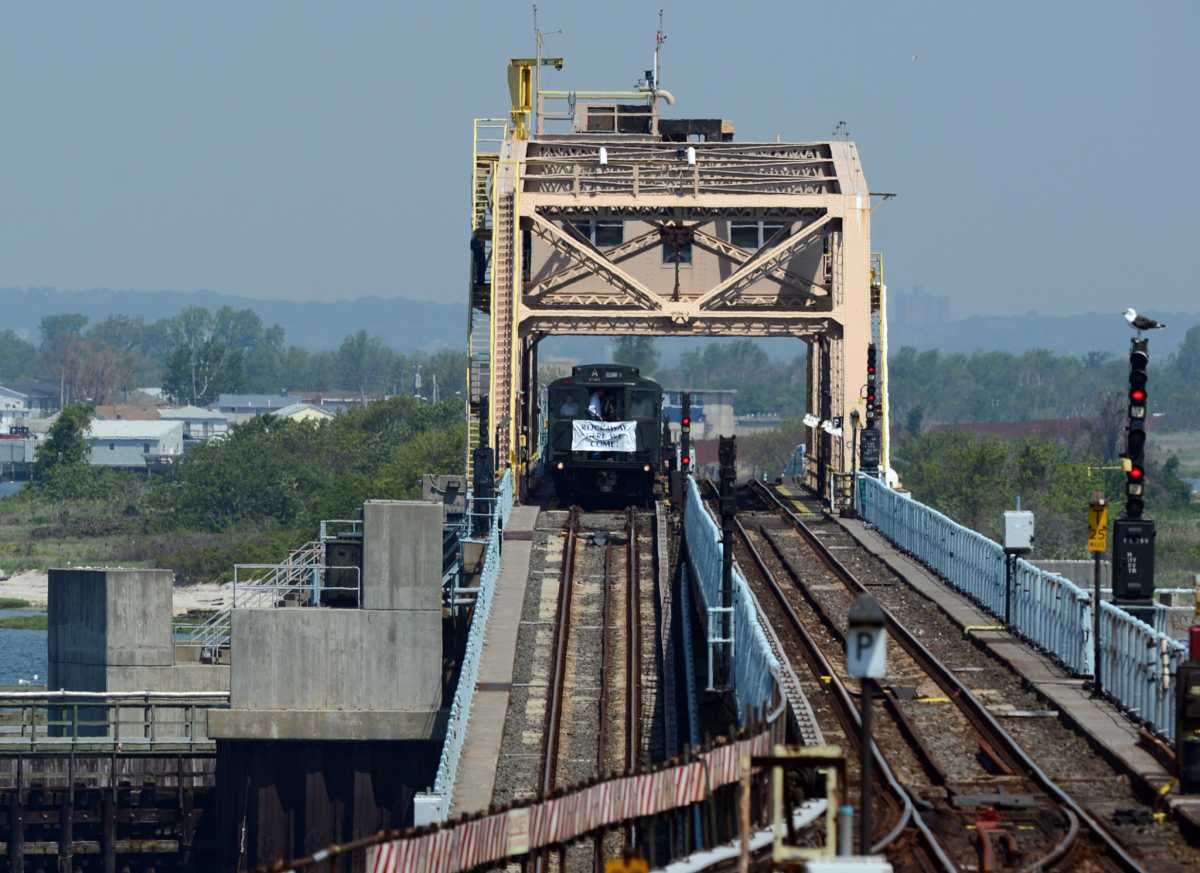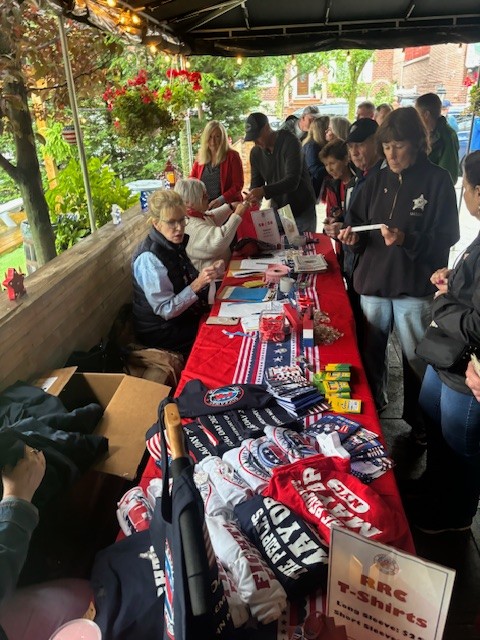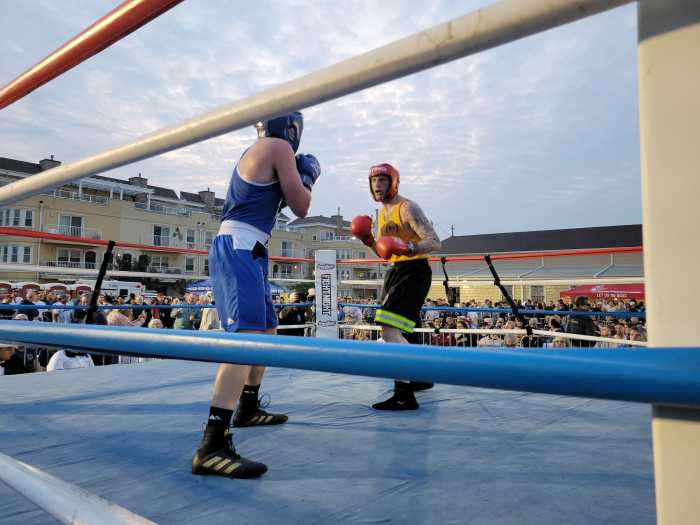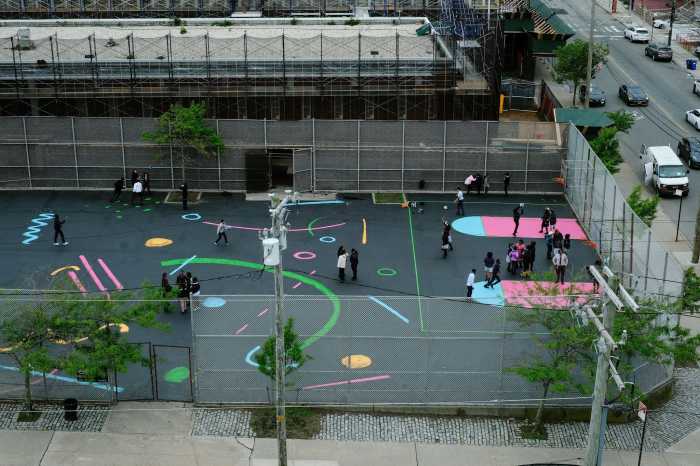MTA representatives appeared before Community Board 14 at the Knights of Columbus in Rockaway Beach last week to preview the Rockaway Rehabilitation and Resiliency Project, a 44-month construction project that will redesign and rebuild much of the peninsula’s existing transportation infrastructure.
The project, scheduled to start later this year and finish in the summer of 2026, will repair the Rockaway Viaduct, Hammels Wye Viaduct and South Channel Bridge, while also adding a signal tower to Beach 105th Street in Rockaway Park. This undertaking by the MTA is inspired by Hurricane Sandy, which resulted in seven months of repair to the train tracks to get them back in service from late 2012 to early 2013.
“It was a tremendous feat in such a short period of time,” said Deirdre Harvey, the project CEO at MTA Construction & Development. “We’re here to try to make the line even more resilient so we don’t have such an interruption in the future.”
During the project’s construction, south Queens residents will face service interruptions for the A-train and the Rockaway Park shuttle, starting later this year as the MTA works on the tracks at Broad Channel and Howard Beach.
The project will then eventually move toward major structural repairs at the Hammels Wye Viaduct, where the A-train and Rockaway Park shuttle separate, and South Channel Bridge, which connects both of these lines from Broad Channel to the Rockaway peninsula. As a result, there will be a required 16-week shutdown of service from January 2025 to May 2025.
Alternates modes of commuting during this period include a non-stop bus shuttle from Far Rockaway to the Howard Beach-JFK Airport station, a local bus shuttle from Beach 67th Street and Broad Channel to the Howard Beach-JFK Airport station, and a subway shuttle that goes across the peninsula between Rockaway Park and Far Rockaway.
The MTA representatives said they would also “enhance” the existing bus service in the area, which includes the Q53 and Q22, as well as cross-honor MetroCards on the Long Island Rail Road at the LIRR-Far Rockaway branch station. There are also ongoing conversations with the New York City Economic Development Corporation to potentially increase ferry service, according to the representatives, but this has yet to come to fruition.
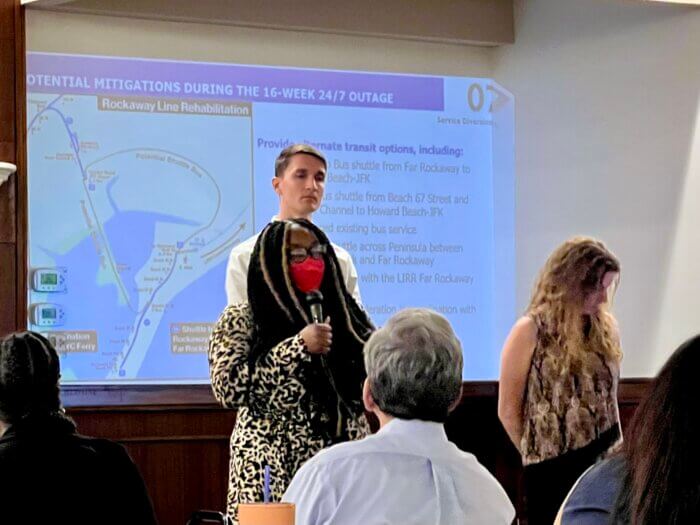
The goal of construction on the South Channel Bridge, according to consulting construction manager Matt Honeywell, is to bring it up “to a state of good repair” before it fails.
“In the event that it does fail, the bridge has to be left in an open stage, meaning that subway traffic cannot move freely at all,” Honeywell said. “Bringing this up to a state of good repair will allow us to make sure that there’s the least amount of impact to the subway as possible.”
As for the construction of the new service tower at Beach 105th Street, this would ensure that train service could continue in Rockaway Park in the event of another storm, as Beach 105th Street is an elevated stop while Beach 116th Street, the final stop, is not. The tower would allow Beach 105th Street to serve as a terminal station.
“If we ever had a storm again and Beach 116th Street was wiped out, we can give you service all the way to Beach 105th Street with the new interlocking and the supporting components of the compressor room and the signal tower,” Harvey said.
One of the most controversial aspects of the project as a whole is that the MTA opted not to schedule the construction during the summer months, citing a longtime tradition of keeping off the tracks during this time to allow people to travel to the peninsula and patronize the local businesses while visiting the beach.
Lucille Songhai, the MTA assistant director of government and community relations, added that they spoke to “stakeholders,” including local business owners and schools, in order to come to that decision.
“A lot of the discussions that we’ve been having with stakeholders, plus our meeting with the community board, has really emphasized the fact that [in] this beach community the business that happens during the summer is something that is very sacrosanct,” said Songhai. “We’ve been all over the Rockaways.”
Chris Tedesco, chair of CB 14’s transportation committee, took issue with Songhai’s definition of “stakeholders” and expressed his disappointment that the project’s timeline had not changed at all since the MTA met with the committee back in March. During that meeting, according to Tedesco, he suggested the revisioning of the project’s timeline so that both locals and visitors could “share the burden.”
“The stakeholders that I’m concerned about are the students, who don’t have a voice like a business does,” Tedesco said. “It’s the inconveniencing of the people that actually live here versus the inconveniencing of the people who don’t.”
“The summer’s going to happen. People will find their way here,” Tedesco said. “We’re having our local residents bear the hardest months in the winter to change their entire commute to accommodate the folks that want to come in the summer.”
Board member Nancy Martinez echoed Tedesco’s frustration, asking the MTA representatives if they conducted any public outreach to the business owners and schools of the eastern half of the peninsula as they did in the western half. When Songhai responded that she spoke to someone from Far Rockaway’s Business Improvement District, which does not exist, Martinez’s frustration only grew more severe over the confusion.
“I’m tired of everybody going up the beach and disregarding us like we’re just garbage in downtown Far Rockaway,” Martinez said. “We’re tax-paying citizens. We have schools. How come they haven’t reached out to the schools? How come they haven’t reached out to the merchants?”
Board member David Shelborne expressed his frustration as well, adding that the planning needs to also implement consistent bus service to lessen the impact on residents.
“If you don’t have multiple amount of buses leaving at extensive, reasonable, and short periods of time, you will have the same nonsense that you have been giving the Rockaway community forever,” Shelborne said. “You can grab a bus from every route in the city of New York and make up that time in Rockaway.”
Songhai responded to Shelborne emphasizing how far in advance the plans are, meaning they can better ensure the MTA has “the proper amount of resources” to support the project.
Harvey acknowledged that this project will inconvenience people but explained that it’s all about “planning versus reacting,” as Hurricane Sandy was an unplanned event and neglecting this project any further would result in unplanned construction further down the line when the existing infrastructure inevitably fails. This reality, according to Harvey, would result in even longer service suspensions as some of the parts can take up to 18 months to customize.
“Construction is always difficult and always inconveniencing people, and we do not like to do that,” Harvey said. “We’re doing this in a planned manner to have the least impact.”

